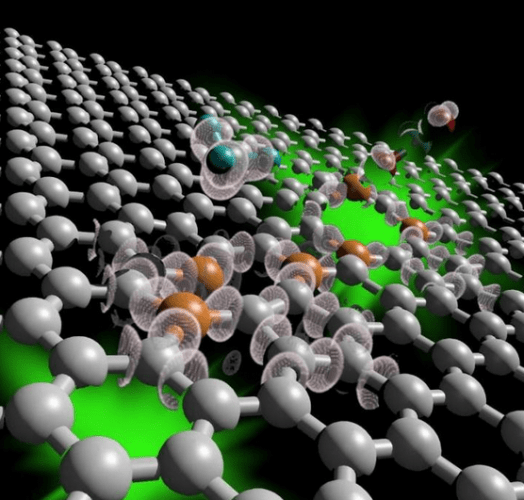Graphene on its own is a highly sensitive gas sensor. When infused with boron atoms, the resulting sensors were able to detect ammonia molecules in parts per million, and nitrogen oxides in parts per billion. Compared to pure graphene, this equates to a 27 times greater sensitivity to nitrogen oxides and 10,000 times greater sensitivity to ammonia. The work, published in the Proceedings of the National Academy of Sciences, could pave the way for sensors for a range of other materials, say the researchers.

“This is a project that we have been pursuing for the past four years, ” said Mauricio Terrones, professor of physics, chemistry and materials science at Pennsylvania State University.
“We were previously able to dope graphene with atoms of nitrogen, but boron proved to be much more difficult. Once we were able to synthesise what we believed to be boron graphene, we collaborated with experts in the United States and around the world to confirm our research and test the properties of our material.”
The project included international collaboration with Konstantin Novoselov’s lab at Manchester University, where the transport mechanism of the sensors was studied. Novoselov was a joint recipient of the 2010 Nobel Prize in Physics for his work on graphene, and is one of the director’s of the National Graphene Institute in Manchester. Collaborators from Belgium, China, Japan, and the Honda Research Institute in Columbus, Ohio also contributed to the project.
“This multidisciplinary research paves a new avenue for further exploration of ultrasensitive gas sensors,” said Avetik Harutyunyan, chief scientist and project leader at the Honda Research Institute.
“We believe that further development of this technology may break the parts per quadrillion level of detection limit, which is up to six orders of magnitude better sensitivity than current…sensors.”




Red Bull makes hydrogen fuel cell play with AVL
Formula 1 is an anachronistic anomaly where its only cutting edge is in engine development. The rules prohibit any real innovation and there would be...